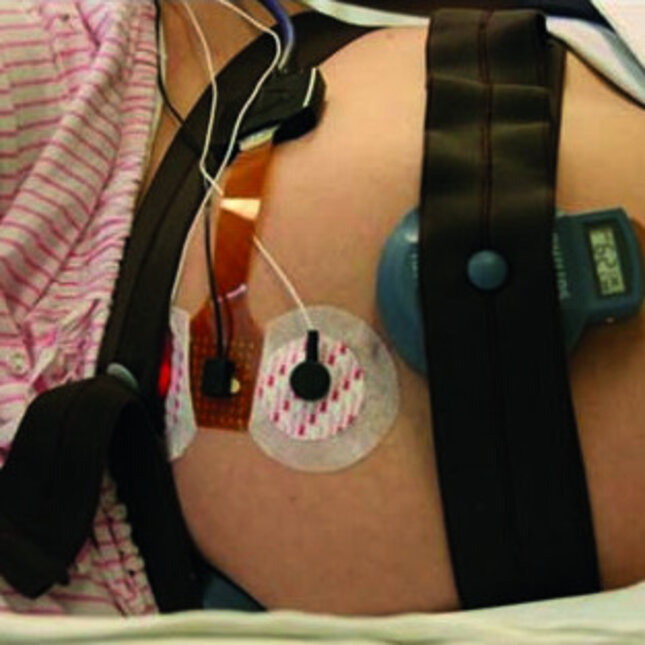Monitor, Diagnose & Present
The area Monitor Diagnose & Present, although not specific to any disease or sub-area of Health, is characterized by a methodology concerned with accumulating knowledge during a care & cure cycle, which involves both patients as well as healthy people.
The application of sensors within or on the body to collect data about your health status
The application of sensors within or on the body, or in the vicinity of a person, is used to monitor a person and collect data about his/her health status. The obtained data allows a diagnosis to be made of the person involved. The presentation of the results can be done at various levels of specialization, right up to the most extensive levels of detail.
There are several strong societal and technological trends that support and drive this Health focus. Firstly, due to the decreasing cost of sensors, they have become now so inexpensive that they can be widely used - also for large studies - in, on or near to research subjects. This trend is further fueled by the smartphone, which is a perfect and powerful device for mobile computing of sensed signals to perform a partial or full diagnosis. Such monitoring is a valuable, additional option to the high- quality hospital environment. Nomadic monitoring of people, at any place and time, creates the opportunity to collect far more health status data than monitoring in a conventional hospital environment only. This points to another extremely promising development: e-Health.
e-Health is based on an online platform where patient data is collected from numerous sources for diagnostic or even disease prevention purposes. These new and advanced health monitoring options are also pushing hospitals and care centres to look at more advanced and better monitoring, diagnosis and presentation methods.

This e-Health development - sometimes called digital health – makes it possible to gather, store and work with more personal data than ever before. This opens up new opportunities for creating structural approaches for data analysis (such as used in machine learning) to improve patient and health status diagnostics. The emergence of Convolution Neural Networks (CNNs) is just one example of important learning features made possible by data collection in a database. This development can be explored in multiple ways, e.g. to improve the diagnosis and its accuracy, or for interventions because the instruments and context information is better accumulated and more reliably understood.
A number of sub-areas have been mapped onto diseases, rather than technological stages, as they are typically applied in combination and are specific to the type of sensor data available. These sub-areas offer excellent and interesting examples of the broad scope of Monitor, Diagnose & Present. Obviously, with the use of sensors and data processing, this focus area has a strong foothold within Electrical Engineering, but it also extends to other faculties such as Biomedical Technology, Industrial Design and Computer Science. In addition, because it also regards the prevention of diseases, there is a strong connection to the area of sports and vitality: areas that reside primarily outside the hospital environment and in day-to-day life of people. This is discussed elsewhere.